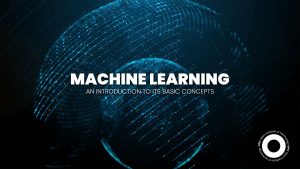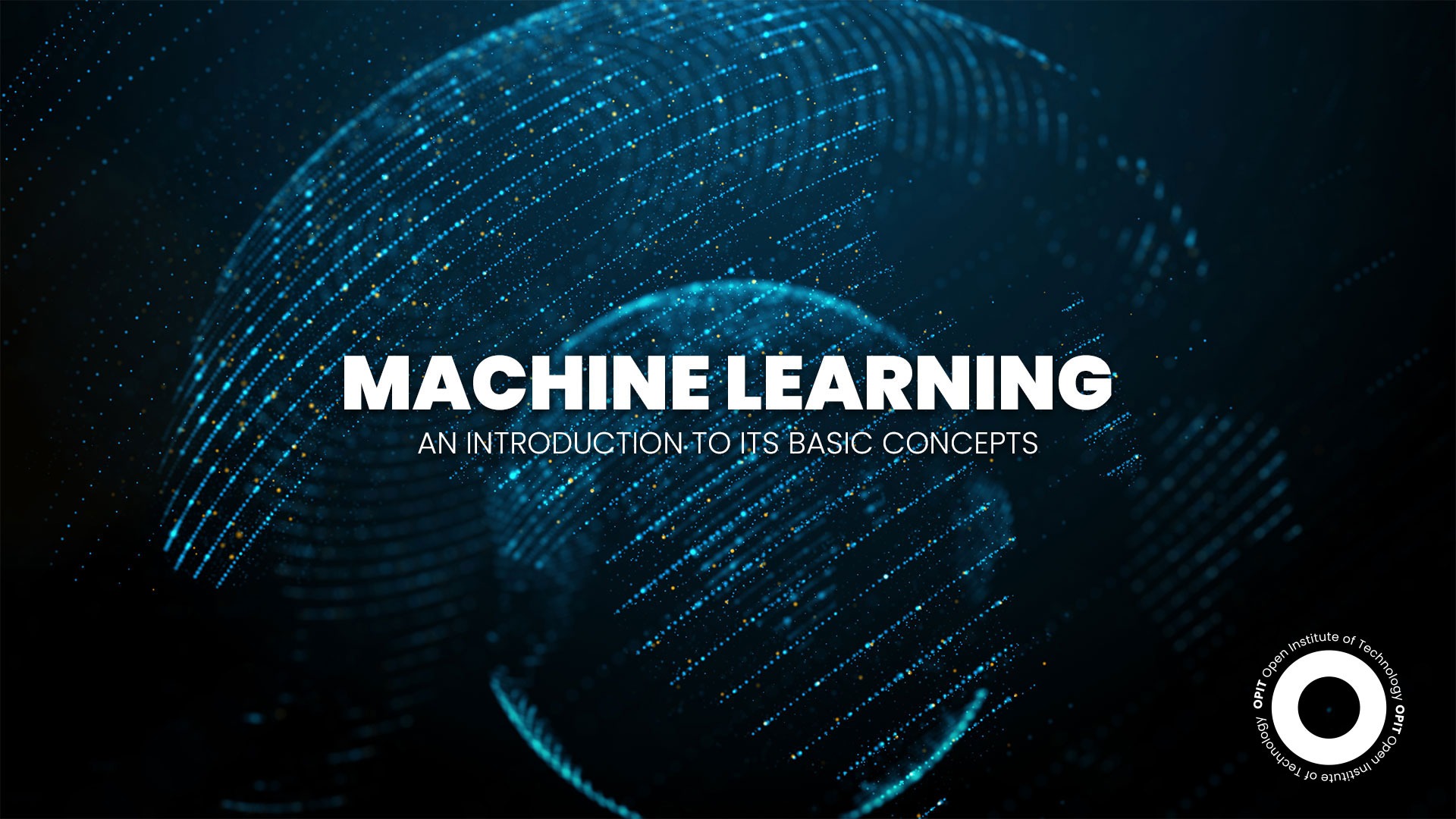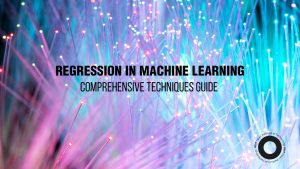Read the full article below (in Italian):


Have you ever played chess or checkers against a computer? If you have, news flash – you’ve watched artificial intelligence at work. But what if the computer could get better at the game on its own just by playing more and analyzing its mistakes? That’s the power of machine learning, a type of AI that lets computers learn and improve from experience.
In fact, machine learning is becoming increasingly important in our daily lives. According to a report by Statista, revenues from the global market for AI software are expected to reach 126 billion by 2025, up from just 10.1 billion in 2018. From personalized recommendations on Netflix to self-driving cars, machine learning is powering some of the most innovative and exciting technologies of our time.
But how does it all work? In this article, we’ll dive into the concepts of machine learning and explore how it’s changing the way we interact with technology.
What is Machine Learning?
Machine learning is a subset of artificial intelligence (AI) that focuses on building algorithms that can learn from data and then make predictions or decisions and recognize patterns. Essentially, it’s all about creating computer programs that can adapt and improve on their own without being explicitly programmed for every possible scenario.
It’s like teaching a computer to see the world through a different lens. From the data, the machine identifies patterns and relationships within it. Based on these patterns, the algorithm can make predictions or decisions about new data it hasn’t seen before.
Because of these qualities, machine learning has plenty of practical applications. We can train computers to make decisions, recognize speech, and even generate art. We can use it in fraud detection in financial transactions or to improve healthcare outcomes through personalized medicine.
Machine learning also plays a large role in fields like computer vision, natural language processing, and robotics, as they require the ability to recognize patterns and make predictions to complete various tasks.
Concepts of Machine Learning
Machine learning might seem magical, but the concepts of machine learning are complex, with many layers of algorithms and techniques working together to get to an end goal.
From supervised and unsupervised learning to deep neural networks and reinforcement learning, there are many base concepts to understand before diving into the world of machine learning. Get ready to explore some machine learning basics!
Supervised Learning
Supervised learning involves training the algorithm to recognize patterns or make predictions using labeled data.
- Classification: Classification is quite straightforward, evident by its name. Its goal is to predict which category or class new data belongs to based on existing data.
- Logistic Regression: Logistic regression aims to predict a binary outcome (i.e., yes or no) based on one or more input variables.
- Support Vector Machines: Support Vector Machines (SVMs) find the best way to separate data points into different categories or classes based on their features or attributes.
- Decision Trees: Decision trees make decisions by dividing data into smaller and smaller subsets from a number of binary decisions. You can think of it like a game of 20 questions where you’re narrowing things down.
- Naive Bayes: Naive Bayes uses Bayes’ theorem to predict how likely it is to end up with a certain result when different input variables are present or absent.
Regression
Regression is a type of machine learning that helps us predict numerical values, like prices or temperatures, based on other data that we have. It looks for patterns in the data to create a mathematical model that can estimate the value we are looking for.
- Linear Regression: Linear regression helps us predict numerical values by fitting a straight line to the data.
- Polynomial Regression: Polynomial regression is similar to linear regression, but instead of fitting a straight line to the data, it fits a curved line (a polynomial) to capture more complex relationships between the variables. Linear regression might be used to predict someone’s salary based on their years of experience, while polynomial regression could be used to predict how fast a car will go based on its engine size.
- Support Vector Regression: Support vector regression finds the best fitting line to the data while minimizing errors and avoiding overfitting (becoming too attuned to the existing data).
- Decision Tree Regression: Decision tree regression uses a tree-like template to make predictions out of a series of decision rules, where each branch represents a decision, and each leaf node represents a prediction.
Unsupervised Learning
Unsupervised learning is where the computer algorithm is given a bunch of data with no labels and has to find patterns or groupings on its own, allowing for discovering hidden insights and relationships.
- Clustering: Clustering groups similar data points together based on their features.
- K-Means: K-Means is a popular clustering algorithm that separates the data into a predetermined number of clusters by finding the average of each group.
- Hierarchical Clustering: Hierarchical clustering is another way of grouping that creates a hierarchy of clusters by either merging smaller clusters into larger ones (agglomerative) or dividing larger clusters into smaller ones (divisive).
- Expectation Maximization: Expectation maximization is quite self-explanatory. It’s a way to find patterns in data that aren’t clearly grouped together by guessing what might be there and refining the guesses over time.
- Association Rule Learning: Association Rule Learning looks to find interesting connections between things in large sets of data, like discovering that people who buy plant pots often also buy juice.
- Apriori: Apriori is an algorithm for association rule learning that finds frequent itemsets (groups of items that appear together often) and makes rules that describe the relationships between them.
- Eclat: Eclat is similar to apriori, but it works by first finding which things appear together most often and then finding frequent itemsets out of those. It’s a method that works better for larger datasets.
Reinforcement Learning
Reinforcement learning is like teaching a computer to play a game by letting it try different actions and rewarding it when it does something good so it learns how to maximize its score over time.
- Q-Learning: Q-Learning helps computers learn how to take actions in an environment by assigning values to each possible action and using those values to make decisions.
- SARSA: SARSA is similar to Q-Learning but takes into account the current state of the environment, making it more useful in situations where actions have immediate consequences.
- DDPG (Deep Deterministic Policy Gradient): DDPG is a more advanced type of reinforcement learning that uses neural networks to learn policies for continuous control tasks, like robotic movement, by mapping what it sees to its next action.
Deep Learning Algorithms
Deep Learning is a powerful type of machine learning that’s inspired by how the human brain works, using artificial neural networks to learn and make decisions from vast amounts of data.
It’s more complex than other types of machine learning because it involves many layers of connections that can learn to recognize complex patterns and relationships in data.
- Neural Networks: Neural networks mimic the structure and function of the human brain, allowing them to learn from and make predictions about complex data.
- Convolutional Neural Networks: Convolutional neural networks are particularly good at image recognition, using specialized layers to detect features like edges, textures, and shapes.
- Recurrent Neural Networks: Recurrent neural networks are known to be good at processing sequential data, like language or music, by keeping track of previous inputs and using that information to make better predictions.
- Generative Adversarial Networks: Generative adversarial networks can generate new, original data by pitting two networks against each other. One tries to create fake data, and the other tries to spot the fakes until the generator network gets really good at making convincing fakes.
Conclusion
As we’ve learned, machine learning is a powerful tool that can help computers learn from data and make predictions, recognize patterns, and even create new things.
With basic concepts like supervised and unsupervised learning, regression and clustering, and advanced techniques like deep learning and neural networks, the possibilities for what we can achieve with machine learning are endless.
So whether you’re new to the subject or deeper down the iceberg, there’s always something new to learn in the exciting field of machine learning!
Related posts

Source:
- Agenda Digitale, published on June 16th, 2025
By Lokesh Vij, Professor of Cloud Computing Infrastructure, Cloud Development, Cloud Computing Automation and Ops and Cloud Data Stacks at OPIT – Open Institute of Technology
NIST identifies five key characteristics of cloud computing: on-demand self-service, network access, resource pooling, elasticity, and metered service. These pillars explain the success of the global cloud market of 912 billion in 2025

You’ve probably seen two of the most recent popular social media trends. The first is creating and posting your personalized action figure version of yourself, complete with personalized accessories, from a yoga mat to your favorite musical instrument. There is also the Studio Ghibli trend, which creates an image of you in the style of a character from one of the animation studio’s popular films.
Both of these are possible thanks to OpenAI’s GPT-4o-powered image generator. But what are you risking when you upload a picture to generate this kind of content? More than you might imagine, according to Tom Vazdar, chair of cybersecurity at the Open Institute of Technology (OPIT), in a recent interview with Wired. Let’s take a closer look at the risks and how this issue ties into the issue of responsible artificial intelligence.
Uploading Your Image
To get a personalized image of yourself back from ChatGPT, you need to upload an actual photo, or potentially multiple images, and tell ChatGPT what you want. But in addition to using your image to generate content for you, OpenAI could also be using your willingly submitted image to help train its AI model. Vazdar, who is also CEO and AI & Cybersecurity Strategist at Riskoria and a board member for the Croatian AI Association, says that this kind of content is “a gold mine for training generative models,” but you have limited power over how that image is integrated into their training strategy.
Plus, you are uploading much more than just an image of yourself. Vazdar reminds us that we are handing over “an entire bundle of metadata.” This includes the EXIF data attached to the image, such as exactly when and where the photo was taken. And your photo may have more content in it than you imagine, with the background – including people, landmarks, and objects – also able to be tied to that time and place.
In addition to this, OpenAI also collects data about the device that you are using to engage with the platform, and, according to Vazdar, “There’s also behavioral data, such as what you typed, what kind of image you asked for, how you interacted with the interface and the frequency of those actions.”
After all that, OpenAI knows a lot about you, and soon, so could their AI model, because it is studying you.
How OpenAI Uses Your Data
OpenAI claims that they did not orchestrate these social media trends simply to get training data for their AI, and that’s almost certainly true. But they also aren’t denying that access to that freely uploaded data is a bonus. As Vazdar points out, “This trend, whether by design or a convenient opportunity, is providing the company with massive volumes of fresh, high-quality facial data from diverse age groups, ethnicities, and geographies.”
OpenAI isn’t the only company using your data to train its AI. Meta recently updated its privacy policy to allow the company to use your personal information on Meta-related services, such as Facebook, Instagram, and WhatsApp, to train its AI. While it is possible to opt-out, Meta isn’t advertising that fact or making it easy, which means that most users are sharing their data by default.
You can also control what happens with your data when using ChatGPT. Again, while not well publicized, you can use ChatGPT’s self-service tools to access, export, and delete your personal information, and opt out of having your content used to improve OpenAI’s model. Nevertheless, even if you choose these options, it is still worth it to strip data like location and time from images before uploading them and to consider the privacy of any images, including people and objects in the background, before sharing.
Are Data Protection Laws Keeping Up?
OpenAI and Meta need to provide these kinds of opt-outs due to data protection laws, such as GDPR in the EU and the UK. GDPR gives you the right to access or delete your data, and the use of biometric data requires your explicit consent. However, your photo only becomes biometric data when it is processed using a specific technical measure that allows for the unique identification of an individual.
But just because ChatGPT is not using this technology, doesn’t mean that ChatGPT can’t learn a lot about you from your images.
AI and Ethics Concerns
But you might wonder, “Isn’t it a good thing that AI is being trained using a diverse range of photos?” After all, there have been widespread reports in the past of AI struggling to recognize black faces because they have been trained mostly on white faces. Similarly, there have been reports of bias within AI due to the information it receives. Doesn’t sharing from a wide range of users help combat that? Yes, but there is so much more that could be done with that data without your knowledge or consent.
One of the biggest risks is that the data can be manipulated for marketing purposes, not just to get you to buy products, but also potentially to manipulate behavior. Take, for instance, the Cambridge Analytica scandal, which saw AI used to manipulate voters and the proliferation of deepfakes sharing false news.
Vazdar believes that AI should be used to promote human freedom and autonomy, not threaten it. It should be something that benefits humanity in the broadest possible sense, and not just those with the power to develop and profit from AI.
Responsible Artificial Intelligence
OPIT’s Master’s in Responsible AI combines technical expertise with a focus on the ethical implications of AI, diving into questions such as this one. Focusing on real-world applications, the course considers sustainable AI, environmental impact, ethical considerations, and social responsibility.
Completed over three or four 13-week terms, it starts with a foundation in technical artificial intelligence and then moves on to advanced AI applications. Students finish with a Capstone project, which sees them apply what they have learned to real-world problems.
Have questions?
Visit our FAQ page or get in touch with us!
Write us at +39 335 576 0263
Get in touch at hello@opit.com
Talk to one of our Study Advisors
We are international
We can speak in:

